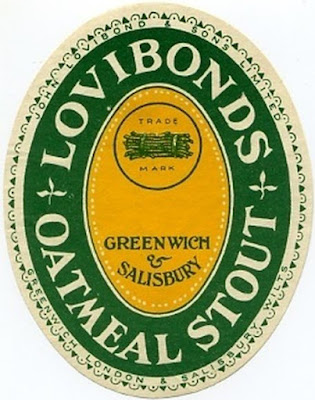More on brown malt. More specifically: the different types of it.
Having downloaded a copy of William Loftus's "The Brewer" I'm going to make use of it. He writes a little about the different types of brown malt.
First de describes what he calls Porter malt or brown malt:
"Porter malt, to be proper, should be made from good barley thoroughly malted, and exhibit a sound interior, of a uniform dark chocolate colour; each corn should be separate, and as near as possible of its original size and shape. In this state it contains a large quantity of soluble colouring matter of a superior kind, composed of burnt saccharine and mucilage, which impart an agree able flavour and odour, as well as colour, to the beer with which it is mixed.
Brown malt differs in its preparation from Pale only in the drying on the kiln , which operation is finished at a brisk heat, obtained from beech, or birch, or some other wood, while the grain is laid an even thickness of about two inches, and occasionally sprinkled with water."
"The Brewer" by William Loftus, London, 1856, pages 18 - 19.
That sounds like the type of brown malt not made in Hertfordshire. Which we saw in my earlier post gave an extract not much worse than the best pale malt.
Then there's the Hertfordshire type. Of which Loftus clearly disapproves.
"Blown malt is another variety of Brown. The vegetated is laid in a moist condition about half an inch thick upon a wire kiln, and kept constantly turned, while exposed to an ardent heat produced from fern, straw, or wood. The grain by this process suddenly expands its husk, and acquires an unnatural size, which gives to it its name of Blown malt.
This fictitious malt was, on the introduction of the Saccharometer, found to yield a deficient produce, as compared with Pale, of from 18 to 25 per cent., and the best Brown of from 15 to 20 per cent."
"The Brewer" by William Loftus, London, 1856, pages 19 - 20.
It's interesting that both types of malt were finished with a direct flame.The big difference seems to be how thickly the malt was laid: 2 inches as opposed to half an inch. It also sounds like the heat was more intense.






























